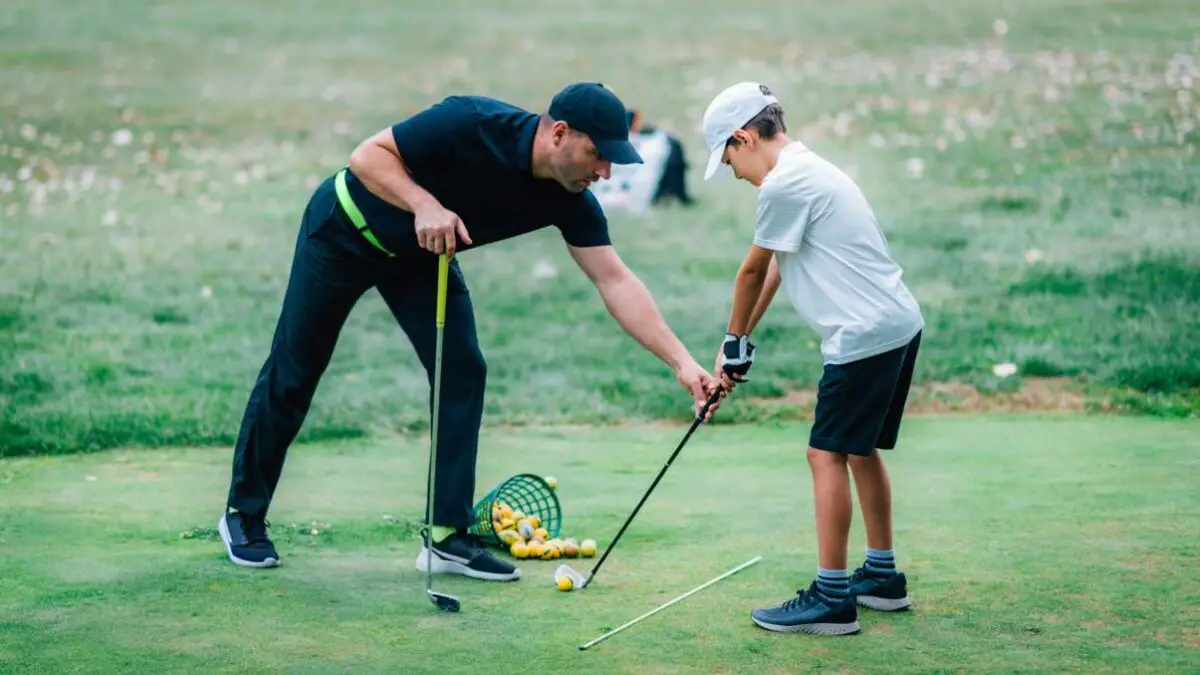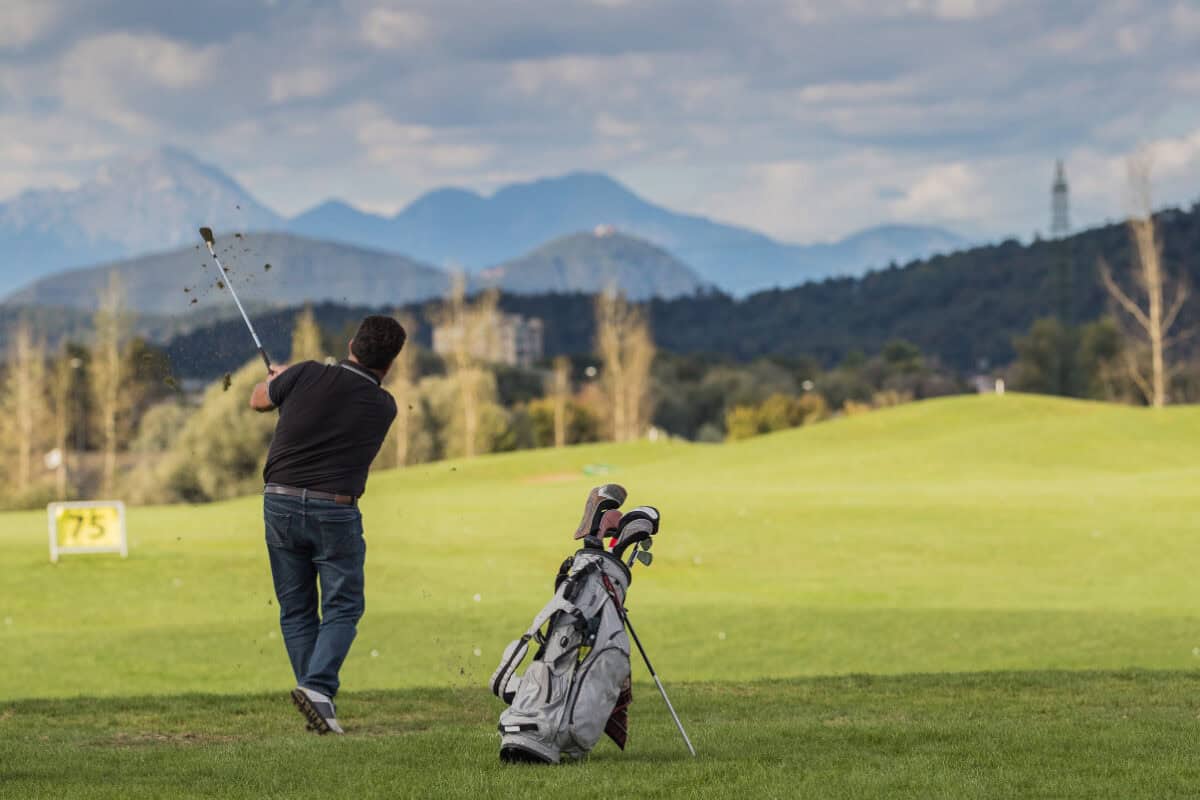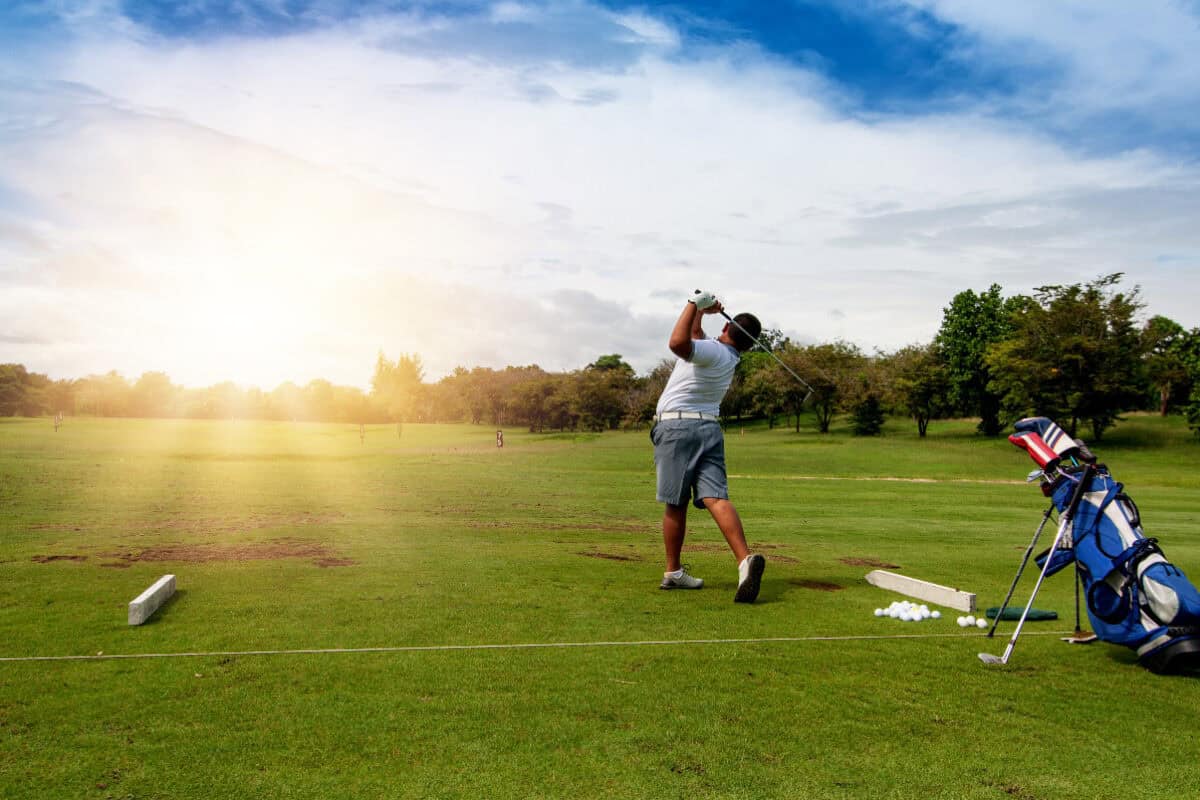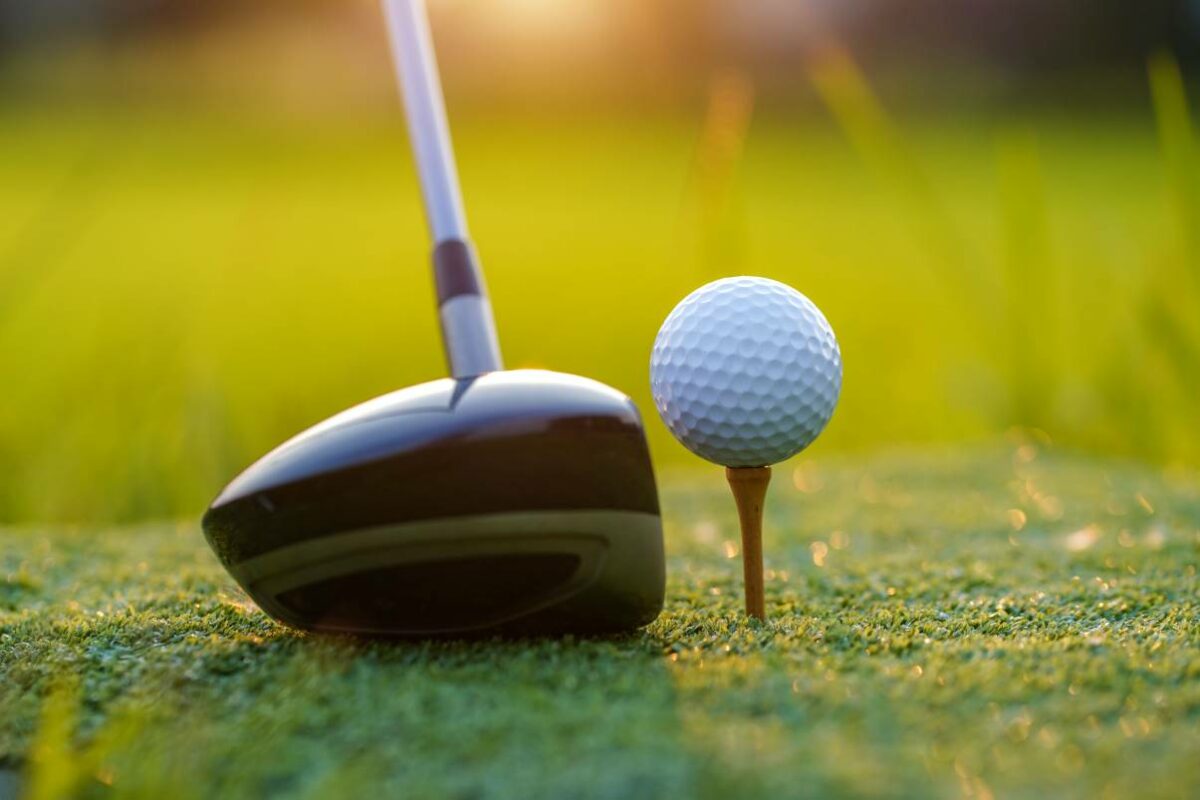Why Do I Keep Topping My Driver? The 8 Reasons
Few things in golf are as frustrating or disheartening as repeatedly hitting the top crown of the driver barely making contact with the ball, resulting in short dribbling low shots that fall well short of intended distance.
If you find yourself frequently ‘whiffing’ or ‘topping’ your tee shots with the big stick, rest assured several common swing flaws and mistakes likely cause this ineffective impact phenomenon.
Correctly identifying the specific culprits plaguing your swing and consciously addressing them through lessons, practice, and adjustments is the key to making a consistent downward-struck solid impact with the driver.

Standing Too Close to the Ball at Address
One of the most frequent stance issues causing drivers to be topped is simply standing too close to the ball at the address setup, with feet excessively near the tee line.
Remember that the driver golf club itself has a very wide arc and swing radius compared to shorter clubs like irons.
Standing too close to the ball prevents you from comfortably clearing your hands and clubhead through the proper downward hitting zone or slot on the downswing.
This forces you to reach outward at impact, resulting in frequently catching the upper crown portion of ball rather than compressing the ball first with centerface.
To correct this, make a conscious effort to move your feet, hips, and entire stance a few inches further away from the ball at the address setup.
This gives your arms and clubhead adequate room to fully extend through the downward portion of the swing arc without impediment.
Finding your optimal stance width and ball proximity will remove the restrictive element of being too cramped, allowing you to trace a circle and deliver the clubhead to the ball fully from the inside.
Excessive Forward Lean of Upper Torso at Address
Another address issue that commonly contributes to topping shots is improper forward tilt of the upper torso and sometimes dipping of the head too far towards the ball itself.
Excessive forward leaning of the upper body reduces proper spine angle and restricts shoulders from turning fully.
This makes it difficult not to run into the top of the ball on the downswing before you gain proper extension.
Be sure to maintain good overall posture through the swing, with the torso and head in a balanced athletic position relative to your core and lower body.
Attempt to keep your rear end slightly outward to enable sufficient room for the arms to drop into the proper slot on the downswing.
Find the centered equilibrium between bending too far forward and remaining too upright.

Casting the Club Outside After Initiation of the Downswing
A common downswing sequence flaw that leads directly to driver-topping issues is when the hips and lower body fire too explosively on the downswing.
This causes the upper body and arms to be flung or ‘cast’ too far outside the ideal swing plane approaching impact with the ball.
This out-of-sequence motion often combines with the clubface shutting, making solid contact difficult and producing naked tops or pulls from the outside-in downswing path.
To remedy this, intentionally focus on keeping your elbows tucked in closer to the torso when initiating and making your way down the initial portion of the downswing.
Avoid letting them fly outward. Also, be sure to let your hips and core initiate the downswing first before bringing the club and hands down together into the hitting zone in a more compact movement pattern.
Finding the proper sequence takes practice but eliminates over-the-top issues.
Raising Up Out of Posture During the Backswing
A posture and balance disruption during the backswing portion of the driver golf swing can also lead to inconsistent and infrequent solid contact.
If your legs are too stiff or straight at address, it is easy to inadvertently start raising up slightly by straightening the knees or arising out of the posture as you take the club away from the ball during the backswing.
This disrupts your established swing foundation and makes it harder to return to the proper plane.
To counteract, focus on maintaining good centered balance and posture established at the address throughout the swing.
Keep your head level and spine angle the same. Concentrate on a steady lower body posture with flex in the knees without any uplifting motions out of that stance as you initiate a backswing.
This retains consistency in your angles and positions on the way back to generate repeatable impact.

Striking Down at Excessively Steep Angles of Attack
Striking down at the ball with an overly steep angle of attack with the driver often initiates topping contact with the upper half of the ball.
While drivers are designed to produce positive strike and low spin when hit with a slightly descending blow, excessively sharp attack angles have an adverse outcome.
Remember that even tee shots require some legitimate compression against the clubface, not just sweeping the ball off the tee.
Maintain good posture and core stability through impact to allow the club head to naturally sweep the ball cleanly from the tee rather than sharply attacking it.
Shallowing the angle of attack just slightly encourages compressing the ball first before accelerating down and through the point of contact.
Don’t try to chop down at the ball as you would swinging an axe. Developing a smooth tempo and letting the properly fit club do the work prevents trying to strike down too violently.
Gripping the Club Too Tightly with Excessive Hand and Wrist Tension
Another contributor to topped tee shots can simply be excessive grip tension and pressure in the hands, wrists, and forearms during the swing motion.
Extreme grip pressure restricts proper unhinging of the wrists and smooth release of the clubhead through impact. Try to grip the club lightly but securely in your fingers and palms without tension.
Holding on too tightly causes inflexibility in the wrists and hands leading to fat and thin strikes.
Carefully monitor tension levels in your hands, wrists, and arms, relaxing any areas of unnecessary tightness or strain.
Focus on solid grip pressure without forcing the club. Light hands promote free hinge and unhinging motion as wrists set and release.
Fluid, tension-free arms, and hands induce consistency.

Poor Weight Transfer and Lack of Forward Shift During Downswing
In order to make a consistent downward compressing impact with the driver, golfers must properly transfer weight and shift pressure into the lead side during the downswing.
Retaining excessive weight on the back foot and rear side during a downswing or swaying laterally rather than forward leads to a lack of stability as the club approaches the ball.
When the lower body fails to post and stabilize, solid clean impact becomes difficult.
Work on the feeling of driving your back hip around towards the target as you begin downswing while lightly dropping your lead heel to the ground and flexing your lead knee as weight merges left.
The head should stay still as the torso rotates aggressively through impact. Follow through with the majority of the weight posted on the lead foot after passing through the hitting zone.
Avoid lateral swaying as well as spinning out backward. Remain centered over your base.
Faulty Ball Position Relative to Stance
Another simple yet frequently overlooked factor in topping tee shots is improper ball position relative to the stance.
Tees placed too far forward in the stance often lead to tops and fat impact. Optimal driver ball position encourages efficient upward dynamic loft and compressing strike.
As a check, align the golf ball with your front heel at address, then make any needed adjustments to tee height so the ball sits lightly above the center face sweet spot.
This descending blow into the slightly upturned face maximizes energy transfer and launch.
Rehearse centering impact in the hitting zone for your optimal stance width and ball alignment. Move the tee forward or back incrementally to refine.
In summary, addressing setup and posture flaws, making key adjustments to swing sequence positions, understanding proper driver attack angles, unleashing the wrists, learning adequate weight shift, and optimizing ball position relative to your stance will collectively cure the most common causes of driver topping tendencies.
Keeping these keys in focus while practicing with purpose will unlock more consistent impact and distance.
